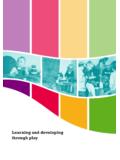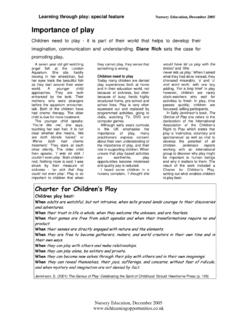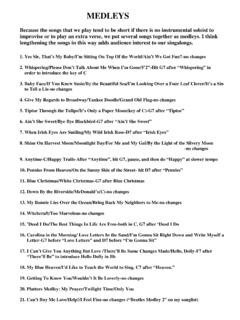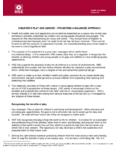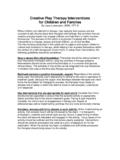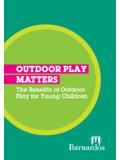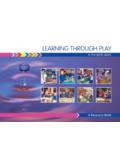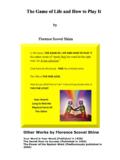Transcription of Sight Reading Complete for Drummers - Play …
1 !!! Free Preview !!! Sight Reading Complete for Drummers Volume 1 of 3 By Mike Prestwood An exploration of rhythm, notation, technique, and musicianship ISBN # 0-9760928-0-8 Published By Prestwood Publications Exclusively Distributed By Sight Reading Complete for Drummers 1984, 2004 Mike Prestwood. All Rights Reserved. First Printing, September 2004 No part of this book may be photocopied or reproduced in any way without permission. Dedication I dedicate this method series to my first drum instructor Joe Santoro. Joe is a brilliant instructor and an exceptional percussionist. With his guidance, I progressed quickly and built a foundation for a lifetime of drumming fueled by his encouragement and enthusiasm. Cover Design: Patrick Ramos Cover Photography: Michelle Walker Music Engraving: Mike Prestwood Special thanks to: James LaRheir and Leslie Prestwood Contents Lesson 1: Lesson 2: Tempo and Beat Lesson 3: Whole, Half, Lesson 4: Snare and Lesson 5: 2/4 and 3/4 Lesson 6: 8th Lesson 7: 16th Lesson 8: Closed Lesson 9: Single Stroke Lesson 10: Dotted Notes and Lesson 11: Lesson 12: 8th Lesson 13: 16th Notes - 1e& and 1 & Lesson 14: 8th Note Closed Lesson 15: 8th Note Beat Time Lesson 16: 6/8, 9/8, and 12 Lesson 17: Tempo Lesson 18: Lesson 19: Lesson 20: Lesson 21: Double Lesson 22: Alla Breve (Cut Time).
2 48 Lesson 23: Appendix A: Warm-Up Set Appendix B: 8th Note Accent Appendix C: Snare Sight Reading Complete for Drummers free preview! 1 Vol. 1 -- Introduction Introduction This thorough and balanced exploration of rhythm, notation, technique, and musicianship has several purposes. You can use this series as a Complete primer to playing orchestral snare or as a precursor to playing rudimental snare, drum set, timbales, or any other percussion instrument that uses drumsticks. Advanced players and professionals can use this fast-paced exploration of their craft to fine-tune their timing and Sight - Reading abilities and to fill in holes in their education. I have tried to use a practical approach and I hope you find it valuable during your entire career. Here is what I tried to do with the lessons: Rhythm Each lesson introduces new rhythmic elements. I tried to keep a fast pace while providing a thorough exploration. After completing the lessons, you will be equipped to correctly interpret and understand nearly any rhythm.
3 If you play along with the audio files available with this series, your timing will improve and, with consistent practice, you will be able to play nearly anything you want. Notation When appropriate, the lessons include clear explanations and alternative notation styles such as the use of 1-line and 5-line staffs, stems up or down, flams and ruffs with and without ties, and many other commonly occurring variations in drum notation. Technique This series covers most drumstick-based techniques including grip, building chops, flams, ruffs, closed roll techniques, and more. Although most of the technique information is included in Lesson 1 Technique , there are gems of knowledge spread throughout. All three volumes contain an appendix A and B. In each of the three volumes, appendix A is a warm up and appendix B contains chop building exercises. Musicianship Having the ability to Sight -read is one thing, but music notation is just part of the bigger picture.
4 Where appropriate, this series delves into such subjects as interpretation, playing with others, dynamics, tempo, etc. While developing these lessons, I strove for a fast pace and an even amount of coverage for each topic. In addition, each lesson is as Complete as possible and is as independent from the other lessons as reasonable. This allows you to review a lesson and focus on the topic of the lesson. You will find yourself returning to various lessons throughout your career to review or re-enforce your playing abilities. Some of the lessons serve as excellent reference sources including such lessons as repeats, dynamics, tempo markings, etc. What s not included? The title Sight Reading Complete for Drummers is a lofty and daunting title. This series presents the elements of drumming as interpreted by me. It focuses on the elements used by non-pitched percussionists who use drumsticks. In addition, this series focuses on the common elements.
5 For example, it does not include outdated notation techniques and obscure new inventions. Each percussion instrument has its own unique playing techniques. For example, percussionists can play the snare drum with either a rudimental style or an orchestral style. They will interpret ( play ) the same drum part differently depending on which style they are playing. Percussionists play timpani, a pitched percussion instrument, using soft mallets and a modified grip and stroke. As a final example, Drummers play drumset differently depending on the genre they are playing. Rock Drummers typically play 8th notes straight and jazz Drummers typically play 8th notes with a rolling (triplet) feel to name just one difference. This series does not attempt to cover all playing variations. Instead, it focuses on snare drum techniques and introduces enough of the other playing techniques to raise awareness. About Volume 1 Volume 1 covers the basics of drumming -- the fundamentals.
6 It starts with this introduction, a technique lesson, and a meter lesson. Then it follows with lessons that explore rhythm and various aspects of drumming. Getting the Most Out of this Book Since Volume 1 serves the dual purpose of first method book and review book, beginners and advanced players will get different things out of it. For those just getting started in drums, read the introductory material and proceed straight through Volume 1 from lesson 1 through lesson 23. Start each practice session with a warm up using either lesson 1 or 2 of this volume. If you already know 8th notes and accents, then build your chops after you warm up using Appendix B as written. play along with the audio files as part of your daily practice sessions. Except for lesson 1, play only to the 100 BPM files. Advanced players can skip certain lessons or parts of lessons that are obviously targeting new Drummers . Start each practice session with a warm up either using the exercises in lesson 1 or appendix A, and build your chops using appendix B as written or using one of the variations.
7 Strive for a very high quality musical sound. play the audio files as part of your daily practice sessions focusing on the slowest and fastest audio files. Review: After completing the lessons in this method series, you can use these books for review material and chop building. If you own all three volumes of this series, here is a formula for getting the most out of them: 1. Warm Up - Warm up using appendix A of any one volume. The volume 1 warm up, this volume, is quick and easy while the warm ups in volumes 2 and 3 are more complex. Strive for loose and relaxed muscles. 2. Build Your Chops Build your chops using appendix B of any one volume. 3. Take a Lesson - Choose one lesson from each volume (three lessons total) and review the material. Sight Reading Complete for Drummers free preview! 2 Vol. 1 -- Introduction Practicing Drums How much you practice depends on your goals. If your goals include becoming a world-class drummer, practice several hours every day.
8 After all, world-class pianists practice piano for many hours every day. On the other end of the spectrum, if you are a student just getting started, practice at least 30 minutes every day. If you cannot practice the usual 30 minutes a day, squeeze in at least 15 minutes or even 5 minutes a day along with a one to two hour practice session at least once a week. It is better to practice a little every day, than to practice a lot a couple of times a week. Your goal is to get in the habit of daily or near daily practice. Advanced Drummers I developed this series with both the student and the professional in mind. (In fact, I developed it with myself in mind. I wanted something I could use with my practice sessions.) Here is some advice: Drum Set Practicing If you are a drum set player, play the beat count with your hi-hat foot, the bass part with your bass foot, and the snare part on the snare. Video Tape Set up your video camera and record yourself playing.
9 When you watch yourself play , you will notice subtle areas you need to work on. In addition, video taping yourself lets you see your good habits and reinforces them. Student Guide Be patient with yourself and have many years of fun with this book. You can use a practice pad or a snare drum to practice each exercise. However, you should practice on a snare drum as much as possible. No practice pad can replace a real drum. Get a Drum Teacher! Unless you are an advanced student, a drum teacher is necessary if you expect to progress at a rapid pace. Tempo Advice - Use a metronome wisely! If you have a metronome, use it. If you do not, buy one. For percussionists, a metronome is part of your fundamental gear and as important as your drumsticks. It is a good idea to alternate playing to a metronome and playing without one. If you always practice to a metronome, you might develop a need to play only with a metronome. If you practice at various tempos with and without a metronome and play along to the audio files for this series, you will develop good time.
10 Tapping your foot is also a useful timekeeper. Practice playing while tapping your foot and not tapping your foot. Unspecified/Specified Tempos: Lesson 2 briefly introduces tempo markings and I usually specified the tempo starting from lesson 17 through the lessons in volume 3. Practice the exercises in this series at the specified tempo first. Then practice at other tempos as desired. Start each exercise at a slow comfortable tempo and work up to the specified tempo or, when not specified, use a comfortable tempo. Repeat each exercise several times. In general, repeat Sight - Reading exercises until you are comfortable with the rhythm and notation. Repeat technique exercises a minimum of 10 times. Sticking Styles There are two common sticking styles: right hand lead and alternating. With the right hand lead style, you use your right hand primarily for downbeats and the left hand primarily for upbeats. With the alternating style, you alternate your sticking as you see fit.
